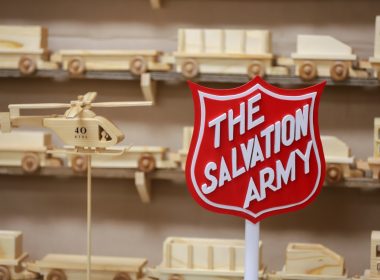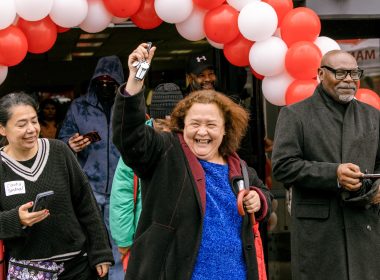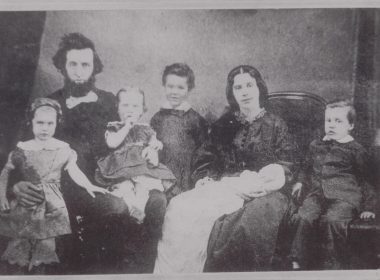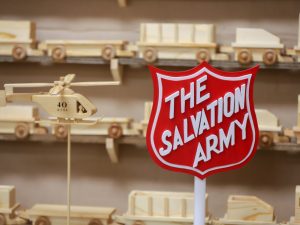A crowd gathered in front of the Dolphin Amphitheater at SeaWorld San Diego June 8, their voices growing louder as they counted down from five.
At zero, a black curtain dropped, revealing two murals created by students from Otis College of Art and Design and Santa Monica College—each crafted from donated clothing provided by The Salvation Army—in celebration of World Oceans Day.
The murals depict underwater scenes with otters, whales, sharks and turtles, while bold letters state:
“Make Waves, Not Waste.”
A closer look reveals the artwork is composed of socks, swimsuits, denim, mesh and other fabrics, carefully stitched and layered to create a textured depth that mimics life underwater.
As the audience viewed the mural, The Salvation Army Western Territorial Adult Rehabilitation Center (ARC) Commander Lt. Colonel Mark Nelson addressed the crowd.
“Together, we are addressing two major challenges: ocean pollution and textile waste through creativity, community and education,” he said. “The murals are a celebration of second chances for people and the planet.”
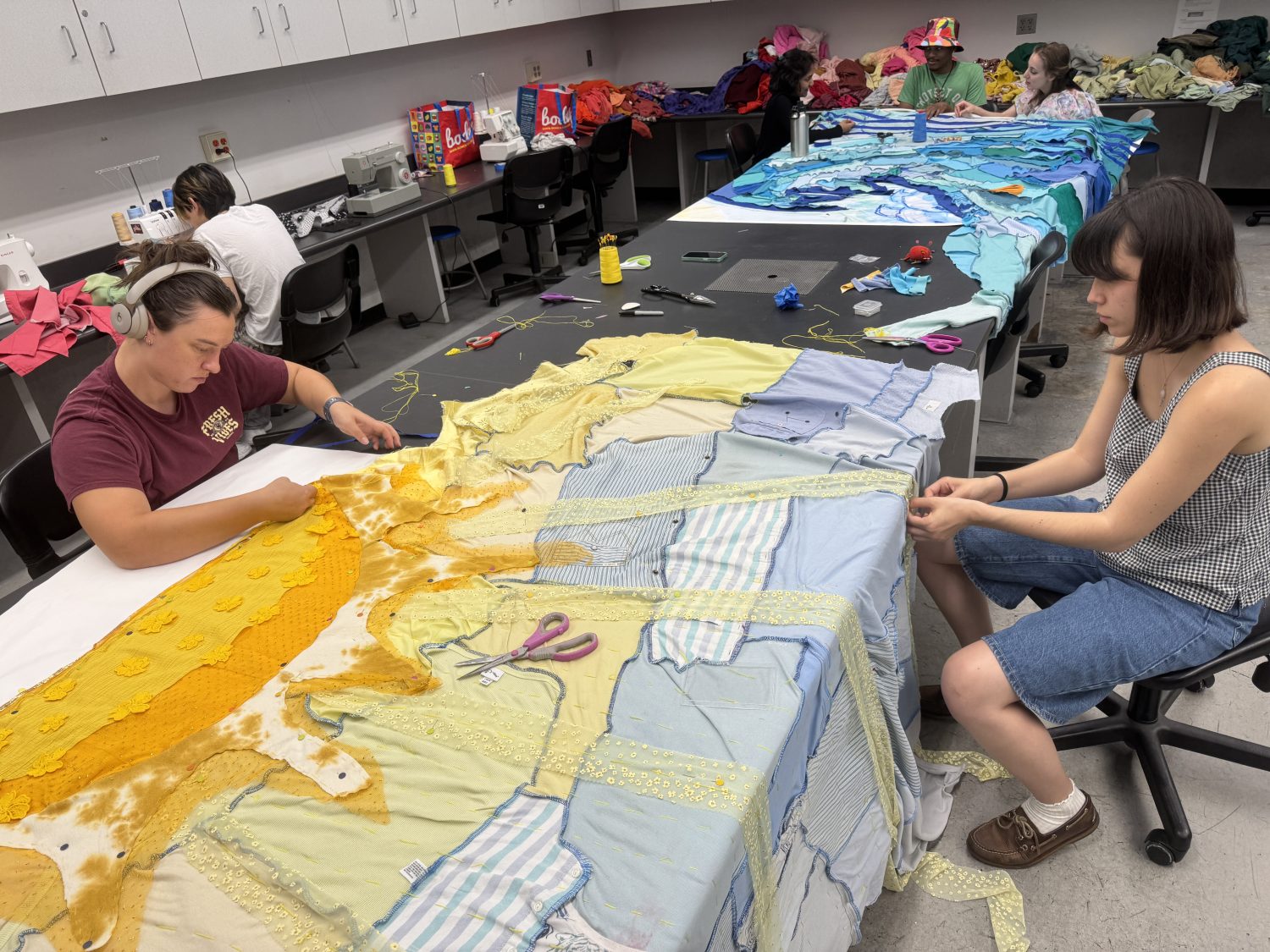
The collaborative project aims to highlight the power of fresh starts through art while aligning with the work of Salvation Army Adult Rehabilitation Centers (ARC), which rely on thrift store sales to fund efforts that help individuals rebuild their lives.
“Through the use of end-of-life clothing that did not sell in our thrift stores, we’re raising awareness that everything we throw away doesn’t really go away,” said ARC Command Regional Donations Coordinator Bianca Nemtoc.
Nemtoc helped lead the partnership alongside ARC Command Director of Donations Development Atticus Firey. In their roles, they strive to reduce textile waste by forming partnerships to help Salvation Army Thrift Stores receive and repurpose donations.
The global apparel industry generates approximately 92 million tons of waste annually, with over 60 percent of clothing made from synthetic fibers that contribute to ocean microplastic pollution, harming marine life and ecosystems.
“Partnering with SeaWorld gives us a platform to raise awareness about ocean conservation and inspire people to take action,” Fiery said, noting thousands of visitors will see the mural each day for the duration of its exhibition.
For design students, seeing their work displayed at SeaWorld was a surreal moment.
“We spent probably close to 1,000 combined hours on this,” said Otis design student Austin Kilbry. “To see it finally here, and know our work will draw attention to ocean conservation, is a great feeling.”
In total, more than 60 students from the colleges contributed to creating the murals.
The process
Constructing the murals was an intricate and collaborative process that began in early 2025, said Svetlana Shigroff, fashion design professor at Santa Monica College.
Shigroff said after receiving the clothes and fabrics, the students sorted everything by color. A dedicated mural lab soon became a creative hub where they gathered to plan and work.
“It grew into a major group project that brought together students from various backgrounds,” Shigroff said. “Many had little to no sewing experience, so everyone worked together to teach and support one another.”
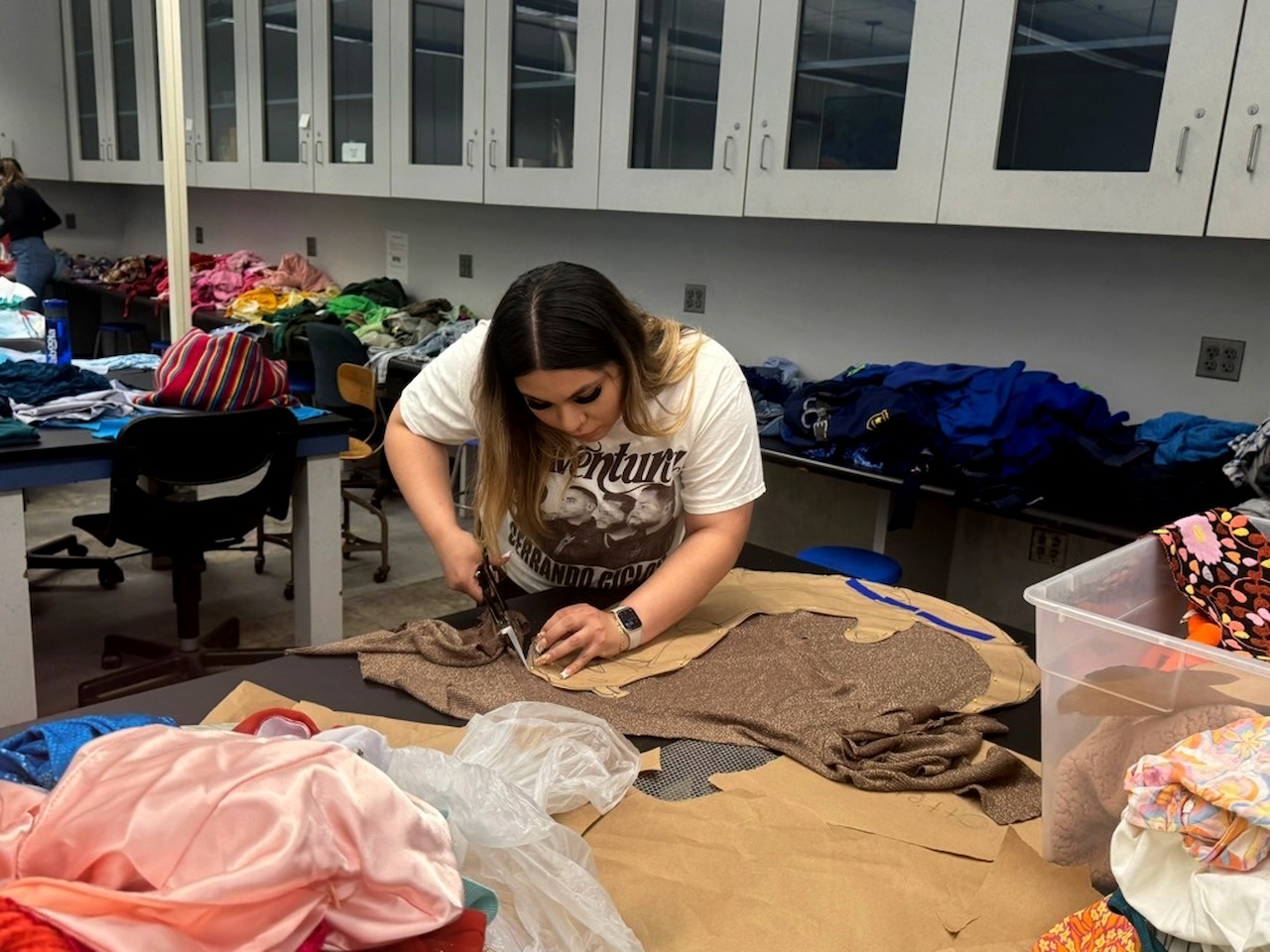
Shigroff said they began by outlining the designs and carefully mapping each element before layering fabric. Students used different techniques depending on the material—some stitched by hand, while others sewed with machines.
“A handful of dedicated students would spend two to three hours a day in the mural lab,” Shigroff said. “They eventually were able to guide other students who stopped in.”
The project became an outlet for many students, she said, offering a break from regular classwork and providing an opportunity to socialize and unwind.
Anna Henkle, a business administration student at Santa Monica College, joined the project to help demonstrate the value of repurposing textiles in artistic and productive ways.
“I was surprised at how we were able to use everyday clothing items that people had given away and put them toward a beautiful piece of art,” Henkle said. “It was a great way to explore sewing and textile art and gain new skills.”
For Henkle, the best part of the project was working as part of a team. After serving in the U.S. Navy, she said the mural experience reminded her of the camaraderie that comes from working toward a shared goal.
“There’s so much value in working together,” she said. “It’s fun, but it also shows that we can accomplish more as a team, especially when it comes to tackling something as important as protecting our planet from pollution.”
Shigroff noted that the project inspired strong teamwork and dedication that students are eager to continue.
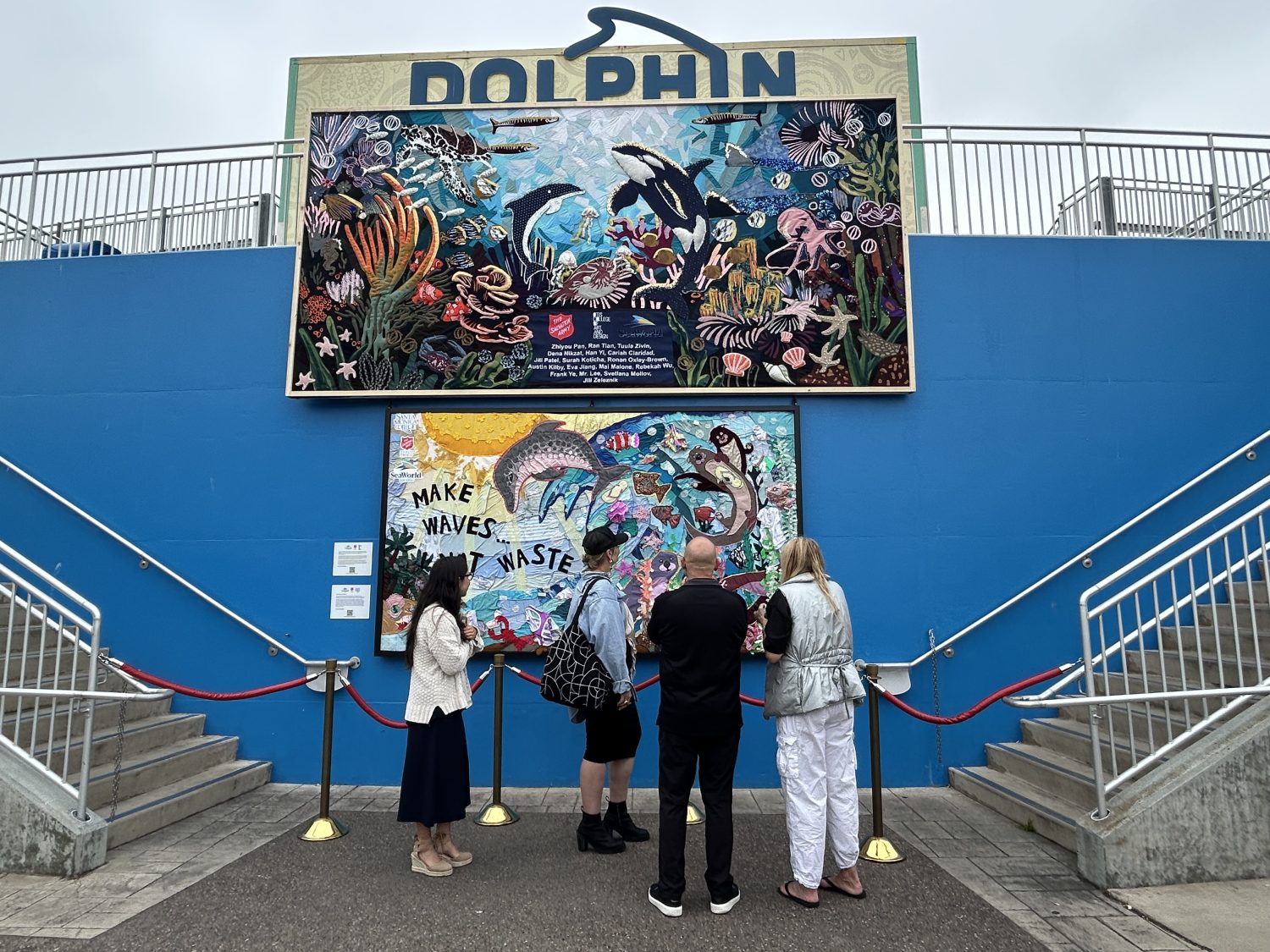
“Now that it’s completed, many students have expressed that they miss it and still want to have that outlet,” Shigroff said. “We have leftover fabrics that we plan to repurpose for smaller projects throughout the summer.”
She said the collaboration between The Salvation Army will continue, bringing unsellable materials into the hands of students eager to make a difference and promote sustainability.
“We’re excited to maintain this collaborative endeavor as we practice sustainability and encourage creative expression,” Shigroff said.
Do Good:
- Imagine we had a good-living modern village with real talk, real stories and real support for being human and hopeful. Join the Hopefuls Collective and find a place of low-pressure, high-encouragement love anytime you need it, whether you know it or not. Get in the group today.

